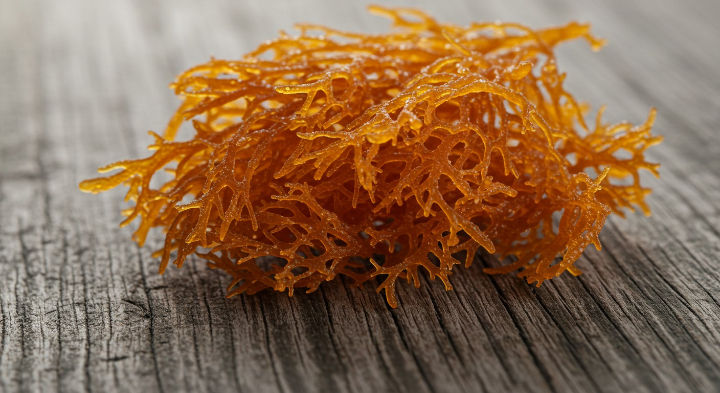Is Sea Moss as Beneficial as They Say, or is it Just a Risky Trend?
- Sep 22
- 3 min read

Sea moss, scientifically known as Chondrus crispus or red macroalga, is a traditional plant from the North Atlantic that has moved into the scientific spotlight. Driven by social media ambassadors and celebrity endorsements, sea moss is widely marketed in the form of powders, gels, and gummies, promoting the alga as a mineral-dense "superfood".
Sea moss is notably nutrient-dense. A single dried portion provides bioavailable iodine, which is essential for thyroid hormone production, along with minerals such as potassium, calcium, magnesium, and zinc.
Approximately one-third of its dry weight is carrageenan, a sulfated galactan that acts as a thickening agent. These complex carbohydrates resist digestion in the small intestine, allowing for their intact delivery to the colon. In the colon, soluble fibers (including carrageenan) act as prebiotics, fermenting into short-chain fatty acids (SCFAs), which helps increase microbial diversity, reinforce the mucosal barrier, and potentially modulate lipid and glucose metabolism. This alga also contains sulfated polysaccharides, which have shown broad-spectrum antiviral activity against viruses like herpes simplex and influenza in vitro, in addition to antibacterial and antioxidant properties.
Proponents suggest that sea moss can support thyroid balance, electrolyte homeostasis, gut integrity, and overall resilience. The high fiber content can also help people feel full longer, which supports weight loss goals, although it is not a magic recipe on its own.
Despite promises from influencers, the scientific evidence supporting the health claims about sea moss remains limited. To date, only two small randomized controlled trials (RCTs) have examined Chondrus crispus in humans, each enrolling fewer than 60 adults for a total duration of less than 12 weeks. These studies reported modest reductions in fasting glucose levels, improved stool frequency, and a slight rise in serum antioxidant capacity.
Experts point out that most alleged benefits are based on cellular or animal studies, which do not always translate to humans. Furthermore, the same nutrients can be obtained from a balanced diet rich in other fruits, vegetables, whole grains, and lean protein.
The most significant concern surrounding sea moss centers on product safety and quality.
Excessive Iodine: Although iodine is an essential nutrient, sea moss can contain high and unpredictable amounts. Consuming excessively high quantities can be harmful and, ironically, can cause thyroid problems such as goiter (an enlarged thyroid), exceeding the adult daily upper limit of 1,100 µg.
Heavy Metal Contamination: Sea moss has the capacity to accumulate heavy metals like arsenic, cadmium, and lead, especially if harvested near industrial coastlines or contaminated waters. Few studies have measured the heavy metal load or microbial contamination.
Supplement Regulation: The U.S. Food and Drug Administration (FDA) does not regulate supplements with the same rigor as pharmaceuticals, meaning the consumer does not always know what they are ingesting. Supplements may contain contaminants or unlisted fillers.
Interactions: Sea moss can interfere with medications, including those for the thyroid, ACE inhibitors for high blood pressure, and anticoagulants, due to its Vitamin K content.
Given the uncertainty about quality and dosage, experts suggest that if one decides to try sea moss, they should opt for the whole food or gel form rather than supplements, seeking balance in the overall diet. Future research must prioritize well-controlled human studies that define optimal doses and monitor safety endpoints like thyroid function and heavy metal exposure.










Comments